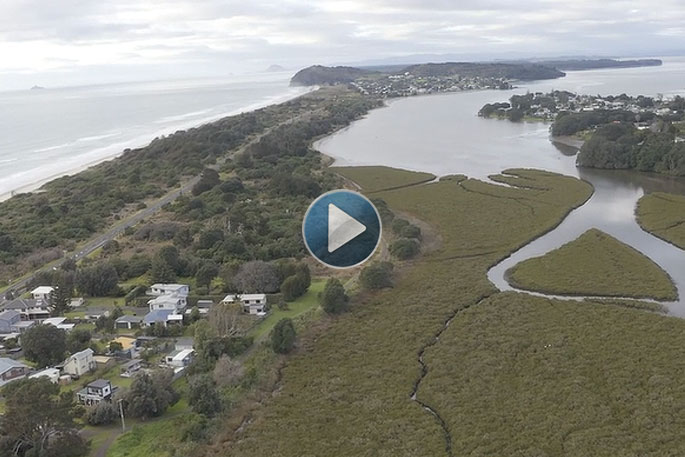New research shows that in some cases, lifting houses may be a cost-effective way to reduce intermittent flooding risk.
Construction cost experts WT Partnership were commissioned by NIWA to provide cost estimates for different types of building.
They found that for buildings of timber and pile construction, lifting them by 2m would be more cost effective than constructing new builds.
However, this method would not be financially viable for buildings of concrete construction.
NIWA coastal and estuarine physical processes scientist Dr Christo Rautenbach led the study.
He says it will provide another option for homeowners who live in coastal lowlands who wish to stay in their property as long as possible.
"We know that the impacts of flooding have been felt by many, and the risk isn’t going away. Communities must adapt, but certain solutions like relocation inland can be unpopular and seen as a last resort, so it’s important to assess alternative coastal adaptation options.
"These initial findings indicate that some property owners may be able to stay put for longer, even taking into account future exacerbation from climate change, albeit with extensive modifications."
This work is part of the NIWA Future Coasts Aotearoa programme.
FCA is investigating how rural lowland communities can prepare and adapt to the impacts of accelerating sea level rise, which is projected to be upwards of 0.3m by 2040 and 1m by 2100.
However, Dr Rautenbach cautions that the study highlighted the complicated nature of such preparations - there are a limited number of specialised houses lifting contractors in New Zealand and although raised homes remain dry, surrounding land and services will still be affected.
"The study also did not include hidden expenses, such as temporary accommodation, storage costs, and the development of supporting community infrastructure such as roads, water and wastewater services.
"With storms intensifying, rainfall increasing and sea levels rising, we must get creative with how we adapt our coastal communities.
"Transformation requires developing the right tools and it will be a multifaceted approach, and this study contributes one more piece to this complex adaptation puzzle, spanning over the social, economic, environmental and cultural landscapes."



1 comment
Housing in flood prone area`s
Posted on 22-11-2023 19:23 | By peter pan
Why not build the homes on a pontoon so as the flood arrives the home rises up a valve could be put in the flexi waste pipes to close as the home rises also auto cut out on power .The pontoon could rise on four poles at the corner of the homes .
Leave a Comment
You must be logged in to make a comment.